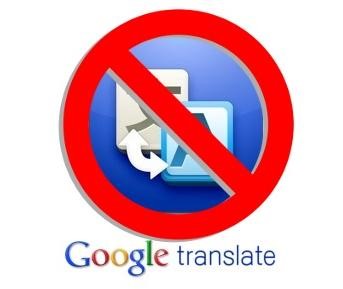5 tips for translating mobile phone apps

Adapting your mobile application to international markets by translating it into several languages will bring you nothing but advantages. Translation can certainly help you increase the number of installations of the application on mobile devices and thus increase your turnover exponentially.
Índice de contenidos
Index of contents
Index du contenu
Inhaltsverzeichnis
Indice dei contenuti
If you are already earning income with a mobile application available in one language, you have the opportunity to multiply your income by investing in professional translation services.
1. Don't do a machine translation

I think we all know the dangers of machine translation for both individuals and companies, and the same goes for apps. It is very unlikely that an application that has not been translated by a qualified translator will end up being developed internationally.
A bad translation of a mobile application or any other commercial documentation is a one-way trip to failure. For quality results, contact a renowned translation agency such as AbroadLink Translations.
2. Translating into the most spoken languages

Start by contracting the translation into the most common languages. In this way, you can maximize your chances of getting your work out to as many people as possible in the markets you want to enter. A professional translation guarantees you a credible presence in the countries in question.
On a technical level, you should follow the principles of internationalization of Android and iOS applications. Always follow good practice, as shown here specifically for iOS. This will greatly facilitate subsequent translation work.
3. Localize your application in addition to translating it

Don't forget that a good translation is not enough, as it must also be perfectly adapted to the target countries. By that we mean the translation of any audio file, or the adaptation of the images to the local contexts.
We also refer to conventions such as the use of commas or periods to indicate decimals or how dates are indicated. We may also have to deal with the currencies of the destination country.
Cultural symbols and values is another element that can vary from country to country, so you have to find out what the local customs are.
Users' tastes and needs also vary. Make sure that your mobile application can be useful and appreciated in the target countries; if not, you will have to internationalize your concept before moving on to translation. Agile localization makes a point about the localization of applications and strategies for cooperation with developers.
4. Check the translation of your app with a native speaker
Once the professional translation is finished, you must go through the test stage in the target country. For this you will need the support of native people in the destination country.
With this test, you can correct any aspect of the translation that leaves something to be desired. A perfect cultural integration of your mobile application must go through this test phase.
5. Analyze translation quality in hindsight

When the translation of your application is publicly available, analyze the statistics and react to user feedback. They will give you suggestions on how to improve the translation and correct certain defects.
Don't neglect these precious aids, as long as they are serious. These suggestions are very useful and are provided free of charge, so don't deprive yourself of them!
Other articles you may be interested in:

Blog writer and Community Manager interested in multiculturality and linguistic diversity. From her native Venezuela, she has travelled and lived for many years in France, Germany, Cameroon and Spain, passing on her passion for writing and her intercultural experiences.




Add new comment